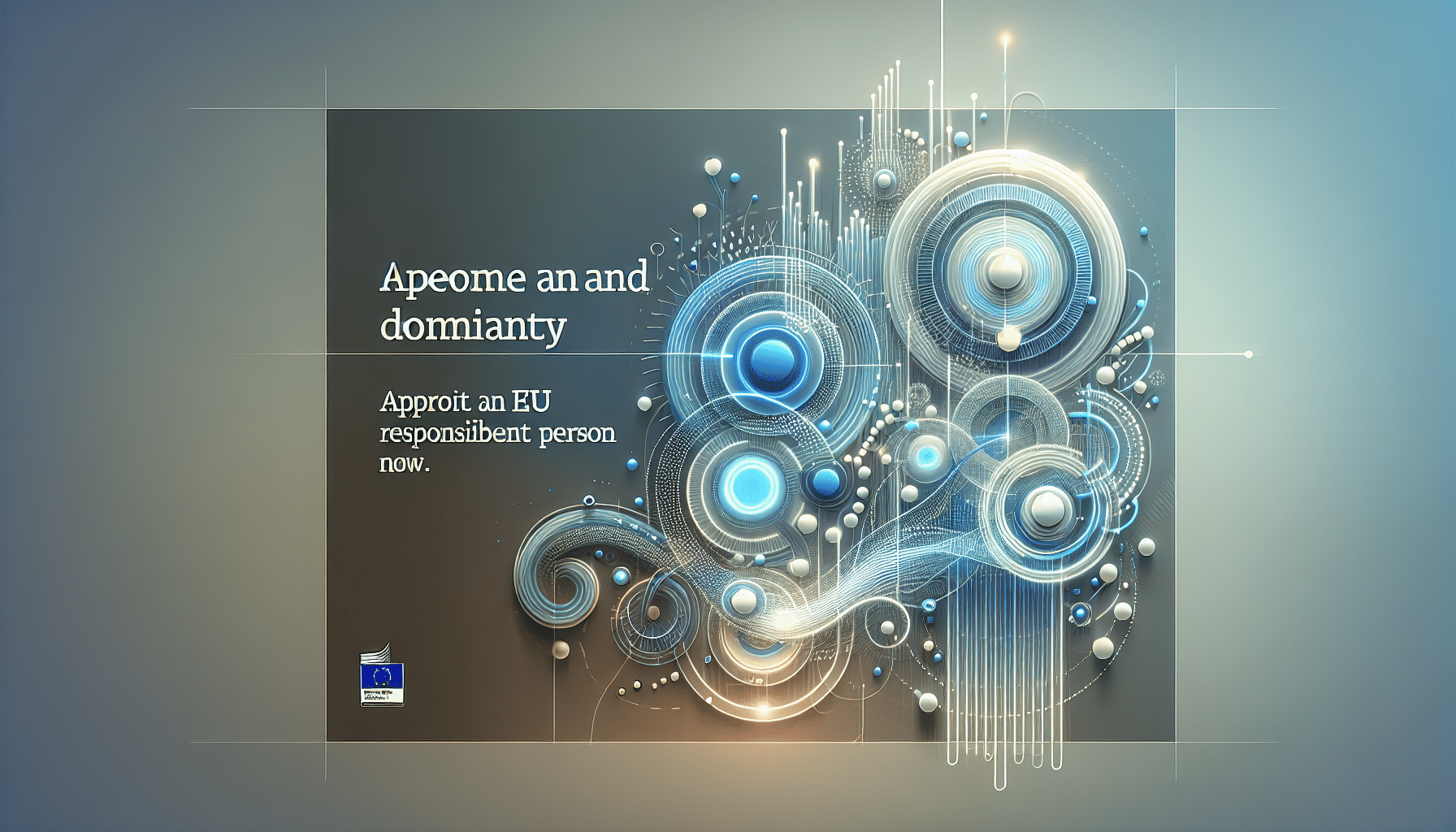About eldris
epr.eldris.ai leads the EPR sector, in fast, automated, AI Agent EU Complaince. LUCID Packaging, WEEE, and Battery Compliance for Brands, E-Commerce and Service based businesses expanding into the EU.
In This Article
- WEEE compliance is mandatory and impacts all producers of electrical goods in the EU.
- Managing WEEE and packaging compliance separately increases administrative complexity and compliance risk.
- A single EU Responsible Person simplifies communication, reporting, and legal accountability.
- Automation tools enhance compliance accuracy and reduce manual administrative overhead.
- Choosing the right compliance partner is key to success and future readiness.
Why WEEE Compliance Matters in the EU
Understanding the Directive
WEEE compliance is a legal obligation for businesses placing electrical and electronic equipment on the European market. The Waste Electrical and Electronic Equipment (WEEE) Directive aims to reduce the environmental impact of discarded electronics by mandating proper collection, recycling, and recovery. For producers, importers, and distributors, compliance involves registering products, reporting sales, and funding recycling schemes. The directive ensures manufacturers take responsibility for the entire lifecycle of their products. Failure to comply can result in significant fines, reputational damage, and market access issues.
Under the WEEE directive, all relevant stakeholders must understand Extended Producer Responsibility (EPR), which assigns financial and organisational responsibility for product disposal to the producer. Given the complexity of cross-border sales and varying national interpretations of the directive, centralising compliance under a single EU Responsible Person has become critical for streamlined governance.

The Burden of Separate Compliance Paths
Managing WEEE and VerpackG Independently
Many companies, especially those expanding rapidly across the EU, make the mistake of managing WEEE and packaging compliance (such as under VerpackG in Germany) independently. This siloed approach often results in inefficiencies, duplication of effort, and increased risk of regulatory non-compliance. Since each member state has unique reporting deadlines, data formats, and national registers, handling separate EPR schemes inevitably compounds administrative burdens.
Moreover, companies unable to coordinate these paths centrally may inadvertently miss deadlines, over-report, or underfund compliance obligations. Non-alignment can result in double counting, inconsistent filings, and audit failures. When teams operate in isolation, the lack of visibility across EPR touchpoints hampers holistic sustainability tracking.
“Splitting WEEE and packaging tasks between departments created bottlenecks. A single Responsible Person clarified our cross-border obligations.” – Head of Regulatory Affairs, Consumer Electronics Brand
Benefits of Appointing a Single EU Responsible Person
Appointing a single EU Responsible Person for both WEEE and packaging compliance delivers cohesion. Centralising this function simplifies communication with national authorities, ensures consistent reporting, and enables proactive compliance management. Furthermore, a unified contact point eliminates internal ambiguity and streamlines document verification across all EU jurisdictions.
Another key benefit lies in reducing the risk of oversight. With a single party overseeing all obligations, the chances of missing country-specific requirements are substantially diminished. This unified oversight also facilitates proactive compliance monitoring, supporting smoother audits and minimising exposure to penalties.
Most importantly, using one Responsible Person improves operational efficiency by removing duplicated tasks involved in handling multiple compliance pathways. This is especially relevant for businesses selling via ecommerce or market platforms, where streamlined compliance signals trustworthiness and credibility to partners and customers.
How a Centralized EPR Approach Reduces Risk
Risk mitigation is a cornerstone of regulatory compliance. A centralised EPR strategy helps enterprises uniformly manage their exposure across EU markets. By consolidating legal ownership and compliance reporting under one authority, inconsistencies between country filings are eliminated. This consistency minimises the chance of enforcement action due to conflicting or erroneous data submissions.
Furthermore, unforeseen regulatory changes are easier to manage when responsibilities are consolidated. A single Responsible Person monitors shifts in national legislation and ensures the organisation remains responsive. This agility is particularly beneficial in highly regulated industries such as electronics and electrical goods, where penalties for late or inaccurate filings can be substantial.
Learn more about EU Extended Producer Responsibility & Packaging Compliance can help you assess your current compliance exposure and demonstrate how centralisation mitigates long-term risk and cost.
Streamlining Documentation Across Markets
Documentation plays a crucial role in WEEE and packaging compliance. Businesses are required to submit evidence of product sales, tonnages, recycling quotas, and financial contributions to national schemes. Doing this separately across 27 EU member states multiplies effort and creates unnecessary duplicates. Merging this under a single Responsible Person enables organisations to collate and prepare documentation using one consistent framework.
This holistic approach also supports sustainability reporting. Consolidated data makes it easier to track recycling targets and improve environmental credentials. Many regulators now require producers to demonstrate documentary evidence of compliance, which can be supplied centrally by the appointed party.
By digitising and automating documentation flows, businesses can reduce errors, avoid fines, and increase transparency across their supply chain reporting requirements. Appoint an EU Responsible Person independently—step-by-step guide provides tools used by hundreds of brands to centralise and safeguard WEEE documentation, reducing manual errors and improving audit-readiness.
Compliance Automation Tools & Services
Technological solutions have evolved to assist companies with EPR compliance obligations. Automation platforms can now aggregate sales data, apply country-specific packaging and WEEE thresholds, and generate the correct filing formats for each national register. These platforms often integrate directly into ERP and ecommerce systems, enabling real-time compliance tracking.
Suite-based compliance management software also simplifies remediation by flagging anomalies or missed filings. Many services offer alert mechanisms for audit deadlines, form changes, and new legislation, empowering the Responsible Person with full visibility. If leveraged correctly, automation tools can reduce compliance time spent by up to 70%.
Read a related article explores emerging software platforms transforming the compliance landscape and includes vendor comparison tables that simplify selection for stakeholders and procurement teams.
Cost and Time Savings Through Consolidation
Managing WEEE and packaging reporting separately not only consumes time but also incurs multiple service provider fees, country representative charges, and administrative overhead. A unified compliance model reduces these expenses. Appointing a single Responsible Person often allows companies to negotiate cross-service discounts, optimise consultancy costs, and reduce hours spent on reporting and monitoring tasks.
Over time, the ROI of consolidation becomes evident. Central billing, fewer vendor invoices, streamlined record-keeping, and reduced hiring needs create significant efficiencies. Additionally, there’s less need to invest in multiple legal reviews to interpret varying national rules—your Responsible Person will already be familiar with them across jurisdictions.
Common Pitfalls When Managing WEEE and Packaging Separately
Businesses regularly encounter obstacles when their WEEE and VerpackG obligations are handled independently. These include misaligned data formats between departments, duplicated producer registrations resulting in deregistration or fines, missed changes in local legislation, and inconsistent fulfilment partner requirements.
Another pitfall lies in audit unpreparedness. Regulators may request consolidated reports that do not exist if systems are fragmented. Moreover, stakeholders often misinterpret EPR scope, resulting in incorrect product classifications—a risk a seasoned Responsible Person can mitigate through proper oversight and experience.
Equally important is brand perception. Fulfilment partners and marketplaces are increasingly verifying sellers’ environmental compliance credentials. Inconsistent or piecemeal WEEE filings may put merchant accounts at risk. Appointing one party centralises accountability and ensures brand presence in the EU remains unimpaired.
Steps to Appoint Your EU Responsible Person Easily
The process to appoint a Responsible Person across the EU is straightforward when guided by experienced partners. Your journey begins with a compliance audit to determine your obligations under WEEE and packaging laws in each member state. Once scope is defined, you select a qualified provider capable of undertaking legal representation, filings, and communication with authorities on your behalf.
Most providers require a Power of Attorney (PoA), VAT number, product lists with EEE categorisations, and historical sales data. From here, they begin establishing your compliance across markets, handling registration, reporting, and verification of legal obligations. Many offer multilingual support and local expertise in interpreting regional regulatory variances.
Once appointed, your Responsible Person will periodically update you on regulatory amendments, provide reporting schedules, and coordinate all submissions to compliance schemes. This support lays the foundation for long-term adherence and sustainability leadership within your industry sector.
Choosing the Right Partner for EPR Compliance
Selecting an appropriate Responsible Person requires diligence. Consider firms with experience covering both WEEE and packaging compliance across multiple EU markets. Evaluate their technology offerings, customer support procedures, and language capabilities. Look for providers that use advanced automation and central repositories for data and documentation.
It’s also vital to assess the firm’s legal foundation in each country. Your partner should be recognised by national authorities and capable of interfacing with regulatory bodies without translation barriers or third-party intermediaries. References, case studies, and transparent pricing models should inform your decision. Ultimately, your chosen partner must operate not only as a service provider but as a strategic compliance advisor.
Real Brand Insights: What Companies Say
Many brands across sectors—consumer electronics, household appliances, and personal care—have transitioned to a single EPR contact with positive results. For example, a fast-growing electronics manufacturer previously working with eight in-market representatives found their resourcing costs slashed by over 40% when consolidating under one Responsible Person.
Others report a greater sense of control and visibility. A sustainable skincare brand cited centralisation as the key step in preparing for their pending B Corp application. “We gained clarity, peace of mind, and time to focus on product innovation instead of compliance firefighting,” said their COO.
Cross-functional teams also benefit. Finance can anticipate consistent costs, while sustainability departments are better equipped to track recycling targets. When structured well, compliance ceases to be a burden and becomes a springboard for ESG credibility and operational excellence.
Conclusion: Futureproof Your EU Compliance Today
[CONCLUSION_CONTENT]
In an increasingly complex regulatory landscape, WEEE compliance isn’t optional—it’s fundamental. By consolidating obligations and appointing a single EU Responsible Person, companies streamline reporting, control risk, and foster sustainability. As newer legislation emerges and enforcement strengthens, centralised compliance ensures your brand stays ahead. Take action now to secure your legal standing and operational clarity in the European market.
Great guide on appoint-an-eu-responsible-person-for-weee-and-packaging-managing-weee-and-packaging-obligations-separately-increases-admin-and-risk-appointing-a-single-eu-responsible-person-consolidates-documenta – Community Feedback
What is the WEEE certification in Europe?
WEEE certification proves a company complies with the EU’s Waste Electrical and Electronic Equipment (WEEE) Directive, ensuring proper product recycling and reuse according to Directive 2012/19/EC.
What is the producer responsibility principle of the WEEE Directive?
The Producer Responsibility Principle means manufacturers and importers are responsible for the environmental impact of their products throughout the entire lifecycle, including appropriate end-of-life management.
What is the meaning of WEEE management?
WEEE management involves the methods used to prevent, control, and remove waste electrical and electronic equipment, focusing on recycling, reuse, and legal compliance within the EU.
What is the WEEE product compliance?
WEEE product compliance means meeting all regulatory requirements set by the WEEE Directive, favouring electronic waste reduction and environmental responsibility through product recovery and recycling.










